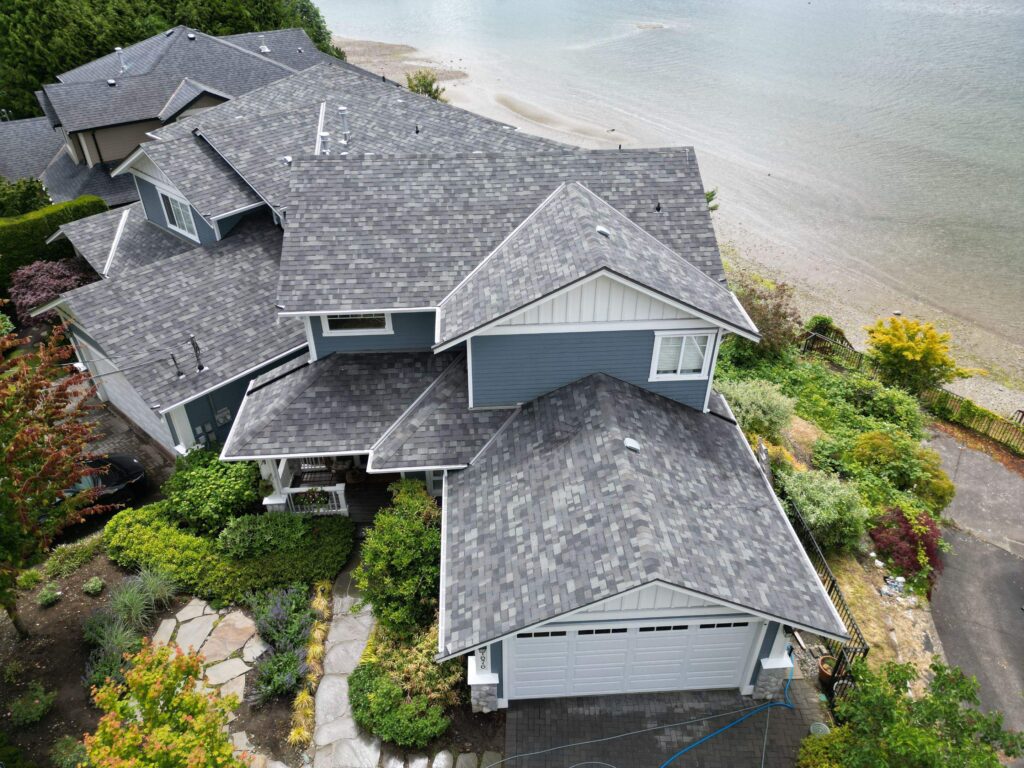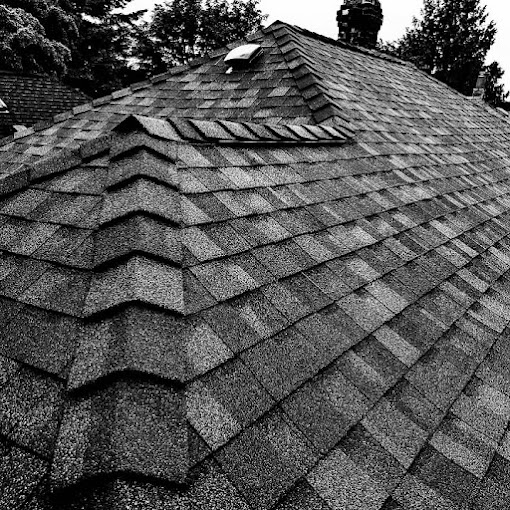When planning or upgrading a roof, one feature often overlooked is roof pitch—the angle or steepness of the roof. But did you know that your roof pitch does more than just shape your home’s silhouette?
A properly designed roof pitch plays a vital role in how efficiently your roof drains water and how long your roofing materials last. From managing snow loads to protecting shingle roofing, the slope of roof affects both performance and cost.
In this blog, we’ll explore 7 powerful ways that roof pitch impacts water drainage and long-term durability, helping you make smarter decisions for your home.
What Is Roof Pitch and Why Does It Matter
Roof pitch is just a fancy way of saying how steep your roof is. You’ll often hear it described with numbers like 4:12 or 8:12. That just means the roof goes up 4 or 8 inches for every 12 inches it runs across.
Why does this matter? The slope of your roof affects how well water, snow, and debris slide off. A steep roof slope helps water drain quickly, which can prevent leaks and extend your roof’s life. But if your roof is low-pitched or almost flat, water can sit longer, increasing the risk of leaks or damage.
The pitch also impacts what kind of materials will work best. For example, shingle roofing is better for sloped roofs, since shingles need a good angle to let water run off properly.
Bottom line? Knowing your roof’s pitch helps you make smarter choices when it comes to materials, maintenance, and keeping your home protected.
1. Why a Steeper Roof Pitch Helps with Water Drainage
When your roof has a steeper pitch, water doesn’t get a chance to stick around. It slides right off. That’s a big deal in places like British Columbia or the Atlantic provinces, where it rains a lot—over 1,500 mm of rain each year, according to Environment and Climate Change Canada.
If your roof slope is too flat, water hangs around longer, which can lead to trouble. But with sloped roofs, the water runs off faster, which helps prevent damage from too much moisture over time.
2. Flat Roof Slopes Mean More Risk for Leaks
If your slope of roof is too low, there’s a good chance water will pool up during heavy rain or when snow melts. And when that happens, it can start sneaking into small cracks or weak spots in your roof. That’s how leaks start.
Steeper roof pitches help water move off the roof quickly and into the gutters, which means fewer chances for water to find its way inside. This is especially important if you have shingle roofing, since trapped moisture can slip under the shingles and slowly damage the layers underneath.
3. Roof Pitch Can Affect How Long Your Shingles Last
Shingle roofing works best when water runs off fast. If the roof pitch is too low, water can seep under the shingles, weaken the glue, and wear them out faster than they should.
On a properly sloped roof, that water is gone before it can cause any damage. That’s why most asphalt shingle warranties only apply if your roof pitch is at least 2:12.
If you’re dealing with a low roof pitch or thinking about getting one, check out this post on the 7 major disadvantages of low roof pitch. It breaks down everything from water pooling and mold to constant repairs.
Need more technical info? The National Roofing Contractors Association (NRCA) also has some great guidelines on recommended roof pitches for different roofing materials.
4. Snow Load and Ice Damming Concerns
If you live in an area that gets a lot of snow, your roof pitch becomes even more important. Flatter roofs tend to hold onto snow, which can add a lot of extra weight. In extreme cases, this buildup can even lead to roof damage or collapse.
There’s also the issue of ice dams. These happen when snow melts unevenly and then refreezes near the edge of your roof, blocking water from draining properly. This causes water to back up and seep under the shingles. A steeper slope of roof helps snow melt more evenly, which keeps ice dams from forming in the first place.
According to the Canada Mortgage and Housing Corporation (CMHC), homes in snowy areas should have a steeper roof slope to help snow slide off more easily and reduce the risk of damage from heavy snow or ice buildup.
5. Impact on Roofing Materials and Installation Costs
The pitch of your roof can also determine which materials are suitable. For example, shingle roofing usually isn’t a good idea for roofs with a pitch lower than 2:12, since water doesn’t drain off quickly enough. In those cases, roof membranes or metal panels are often a better fit.
Steeper sloped roofs can be more expensive to install, though. They usually take longer to work on and require extra safety gear, which adds to labor costs. But the upside is fewer water issues over time and lower maintenance needs, so the higher cost at the start might save you money down the line.
6. Maintenance Needs Based on Roof Pitch
Flat or low-pitch roofs need more hands-on care. Leaves, dirt, and debris tend to build up, which can clog drains and lead to standing water problems.
If you have a steep roof pitch, nature lends a hand. Rain, snow, and debris usually slide right off, making it easier to keep the roof clean and reducing the risk of leaks or wear and tear.
Still, no matter the slope of your roof, it’s a good idea to schedule regular check-ups—especially after heavy storms or winter—to catch any small problems before they turn into big ones.
7. Choosing the Right Roof Pitch for Your Home
The best roof pitch for your home depends on a few key things:
- Climate – If you live in an area like Vancouver that gets a lot of rain or snow, a steeper roof slope helps water drain faster and keeps snow from building up.
- Material Type – Some materials, like asphalt shingle roofing, need a certain minimum slope of roof to work properly and last longer.
- Home Design – Whether your house has a classic look or a modern style, the roof pitch should match the overall design.
- Budget – Flatter roofs might be cheaper to build at first, but they can lead to more maintenance and higher costs later on.
A trusted roofing contractor can take a look at your home and help you figure out the best roof pitch for your needs, based on your house’s structure and the local weather.

Final Thoughts: A Smart Roof Pitch Makes a Big Difference
Getting the right roof pitch does more than just improve drainage. It can help your shingle roofing last longer and protect your home better over time.So, whether you’re building a new home or planning a roof upgrade, don’t ignore the slope of roof. Choosing the right one now could save you a lot of money and trouble down the road.

